R







“I’ve heard painting called the last hand-made thing in our world, which it obviously isn’t. But it is one of relatively few things left which can be made only by hand, and each painting can be made only once. It embodies the individual experience of the extended moment of its making, an experience of which its maker is only partly in control. In its full extension this moment includes the entire experience of the painter. The painting is the manifestation of this experience in all its particularity, and as such is directly accessible to the experience, momentary and extended, of others. We only have to look. Everything shows.”
-Robin Utterback, “The Experience of Painting,”
The Threepenny Review, No. 24 (Winter 1986): 19-20.
Cover Image: Untitled (#437), 1991, acrylic on canvas, 78 ½ x 81 ½ in.
2143 Westheimer Road Houston, TX 77098 www.foltzgallery.com

This catalog was published to accompany the exhibition
“Robin Utterback: Everything Shows,” curated by Sarah Foltz and Sirena LaBurn Foltz Fine Art, Houston, Texas October 22–December 3, 2022
Copyright © 2022 The Robin Utterback Trust. All rights reserved. No part of this publication may be reproduced, in whole or in part, in any form without written permission of the publishers.
Published by Foltz Fine Art, LLC, 2022
Photography and Catalog design by Foltz Fine Art, LLC
Foltz Fine Art is pleased to present Robin Utterback: Everything Shows, featuring over 40 artworks produced throughout the artist’s life. Utterback’s approach to creating art was both spontaneous and structured. He implemented a number of “atypical” approaches including sanding or scraping down thin layers of paint, a process which is observed in a number of his paintings. Ultimately, however, Utterback’s works offer more than a method of production; they reveal a process of thinking and visually reference Utterback’s explorations of each work’s possibilities. Robin Utterback: Everything Shows includes works on paper, acrylic on canvas, and a painted cardboard mask among other media. While Utterback’s oeuvre is not distinguished by a singular theme or unified style, the artist’s works faithfully demonstrate a commitment to exploring materials and their treatment.
Graduating in 1974 from Rice University, Robin Utterback became an important figure in the Houston art scene, and remained an active figure over the next three decades until his untimely passing. Following the artist’s death in 2007, his trust began working with curators, gallerists, and collectors to continue his legacy and rightfully exhibit Utterback’s life’s works and career as an essential part of Texas and American art history.
When the gallery was approached by Emily Todd, Trustee of the Robin Utterback Trust,
we were immediately interested in exhibiting Utterback’s works. Over the past few years we became aware of several intriguing works by Utterback via the secondary market and in appraisal research, and were absolutely thrilled to learn similar works are currently represented in the Trust’s holdings. As a whole, Utterback’s works visually illustrate an artist’s evolving visual language throughout his lifetime. His work varies widely, with the different periods and phases of work reflecting his continual development as an artist, and in particular a painter.
While Utterback is often referred to as a “painter’s painter,” the sophistication and quality of his work can be appreciated by all. A deeper understanding of his work is, however, made possible when one learns to look at each piece through the eyes of a painter. It was through co-curating and working with Sirena LaBurn, an emerging Texas artist who also works for the Utterback Trust, that I truly began to examine Utterback’s work with a fresh perspective. As LaBurn suggests in her following essay, approaching Utterback’s works with a focus on materiality and form generates a certain appreciation for his interest in the complexities of various media. In this light, Utterback’s manipulation of form and his exploration of each work’s physical possibilities further reveals visual dialogues throughout each period of his work.
The exhibition, Robin Utterback: Everything Shows, is a loosely chronological retrospective that examines the life and work of one of Houston’s great 20th century artists. Utterback’s works seem to gain greater clarity with time and reflection. With this exhibition, we invite viewers to slow down and learn to see as an artist would, admiring Utterback’s vision so everything may show.
Foltz Fine Art, Houston, Texas
October 2022
Foltz Fine Art (formerly William Reaves | Sarah Foltz FineArt)isalegacygalleryinHouston,Texasdedicated to elevating premier Texas artists—from Early Texas Masters and Mid-Century Pioneers to Contemporary Artists. The gallery started in 2006 as William Reaves Fine Art and has since welcomed Sarah Foltz as Gallery Director in 2013 and becoming sole owner in 2017. In her new role, Sarah continues to uphold the gallery’s strong reputation as a trusted art advisor, secondary market specialist, and champion of Historical, Modern and Contemporary Texas art. Prior to joining the gallery, Sarah completed her M.A. in Art History at Southern Methodist University where she focused her thesis research on contemporary Texas regional and Latin American art; and before this, she received her B.A. in Photojournalism at the University of Texas at Austin. Sarah is also an accredited member of the Appraisers Association of America.
This essay was originally published in “Remembering Robin Utterback,” the catalogue accompanying the exhibition organized by Clint Willour for the Galveston Arts Center in 2007.
For more than three decades, Robin Utterback was a central figure in Houston’s art community. A graduate of Rice University’s maverick B.F.A. program in 1974, he had his first solo exhibition the following year at Tibor de Nagy Gallery in Houston (later Watson/de Nagy & Co.). The Museum of Fine Arts, Houston, made its first acquisition of one of Utterback’s works in 1978; the museum purchased a major painting in 1982; and in the years to come the MFAH continued to work with the artist on numerous collection, exhibition, and publication projects.1 Utterback was also profiled in important exhibitions at the Contemporary Arts Museum Houston and the Galveston Arts Center, as well as a number of galleries across Houston, in New York, and in Europe.
Despite this broad range of exposure, however, Utterback remains an artist difficult to categorize. Deliberately working outside the mainstream of Texas art, which embraced an essentially narrative sensibility throughout the 1970s and 1980s, Utterback was committed to a more cerebral and abstract approach, and as this exhibition eloquently demonstrates, he brought to his studio practice a consistent sense of inquiry. In a 1985 interview, Utterback confessed: “I try to know my qualities as a painter through close observation, to accept them, and to develop them as fully as I can within the context of what I perceive the possibilities of painting to be. The results are the paintings I wanted to make in the sense of ‘needed,’ rather than ‘wished.’ This does not preclude a willed element nor even a willful one.”2 Remarking on the genesis of Utterback’s compositions, former Contemporary Arts Museum Houston director Suzanne Delehanty observed: “Each of Utterback’s pictures is an invented world where light and dark, order and chaos, calm and intensity follow laws of his creation. For Utterback, the blank sheet of paper or empty canvas is like a game board where an infinite number of permutations exist within the changing combination of forms, colors, and touch.”3
But Utterback did not work in a vacuum. Early in his career he professed a particular admiration for the densely built-up surfaces and the embedded light of Pierre Bonnard’s Dressing Table and Mirror, c. 1913, in the John A. and Audrey Jones Beck Collection

at the Museum of Fine Arts, Houston.4 Lee Krasner, Milton Resnick, Jasper Johns, and Brice Marden, among others, were tacitly acknowledged and deconstructed in Utterback’s paintings of the 1980s and 1990s. In 2002, he entered into a two-year collaboration with the painter Christopher French; they exchanged drawings executed on large sheets of blotting paper, layering autographic marks one on top of the other, bringing to the project a remarkable degree of respect and willingness to intervene. “Our collaboration was a bit like letter writing, with each of us initiating a series of marks or gestures on a sheet and then exchanging it for the other’s marked sheets,” French has chronicled. “There was no predetermined starting point or agreed-upon imagery; rather, each exchange built upon the other’s opening gambits.”5
In 1991-92, Utterback embarked on a different kind of collaboration with the printmaker Penny Cerling. In the masterful Untitled (#531) portfolio, Utterback treated the copper plate as a palimpsest; each stage of the evolving composition was preserved in the sheets that make up the portfolio. Barry Walker, the curator responsible for acquiring one of these editions for the MFAH collection, describes the series:
In his printmaking activities, Utterback followed the well-known dictum of Jasper Johns: “Take an object. Do something to it. Do something else to it.” In the nine-sheet etching-and-drypoint portfolio Untitled (#531), he used only one plate, which he reworked after printing each serial image by
scraping, burnishing, redrawing the image and, sometimes, rotating the orientation of the plate. The result is an immensely satisfying portfolio in which the viewer can trace the artist’s thought process as he explores various permutations of an image.
Also like Johns, Utterback did not cancel his plates after pulling an edition, as most painter/printmakers do, reserving the right to go back to a plate at a later date to pursue second thoughts. Four years after publishing Untitled (#531), he again reworked the same plate to create the single intaglio print, a more lyric, over-all image, a coda to the earlier suite of nine.6
Utterback also shared profound literary interests with a number of poets and writers. For the One + One exhibition curated by Janet Landay and Donald Barthelme, he was paired with the poet Richard Howard. Utterback’s tile-like segmented painting, Setting/Colored Stones, 1987, offered an eloquent response to Howard’s six city poems, picking up on Howard’s deliberate topographic and chromatic themes.7 In 1988 he returned to these themes again with a more unified composition, Untitled (#283), translating the shifting planes of his earlier collage into pentimenti and ground washes. Important friendships with the art critic Harris Rosenstein and art historians William Camfield, William Agee, and Patrice Marandel further fed Utterback’s omnivorous curiosity, and his studio was always open to curators, collectors, and friends. George Shackelford, former curator of European
Untitled (#584), 1992, acrylic on canvas, 77 ¼ x44 ¼ in.

paintings at the MFAH, recalls:
I met Robin Utterback shortly after I moved to Houston in 1984. For me, Robin was one of those wonderful artists who had strong opinions about the art of the past, and who was interested in a vast array of artists of all eras and a wide variety of styles. Talking with him about Cézanne or Leonardo or Matisse or Goya was such a pleasure; he had a reaction to the work of art that was at once visceral and cerebral, and his visual acuity was matched by his ability to verbalize his thoughts. I don’t remember so much the details of what we talked about as I do Robin’s far-ranging appetite for great art—particularly painting and drawing—and his desire to learn from his friends and teach them, in return.8
Studio visits at 2311 Grant Street were not only occasions to see finished paintings and drawings, but also opportunities to witness Utterback’s continuing engagement with works in process. A canvas that had been
dominated by a blue lattice on one visit could assume a completely new palette and complexity within the space of a few weeks, months, or even years. At the same time, Utterback could be unflinchingly rigorous. For example, Untitled (#404), 1990, was built out of a single compositional restraint: the entire palette was dependent on colors that could be derived from one tube of red acrylic paint and one tube of black. Working on raw canvas, Utterback achieved a range of hues from a fully saturated crimson to the palest washes of gray. Similar exercises had been undertaken by constructivist and minimalist painters of earlier generations, but Utterback departed from these precedents by infusing his composition with a fresh calligraphic energy. Linear arabesques sprawl across the plane, at times coming together in a thick weave of lines, and then ricocheting back to the margins of the canvas.
The paintings and collages that followed Utterback’s 2004 tenure in Strasbourg are among his most haunting explorations. The iron grille work that decorates the facades of the old-town structures is echoed in such paintings as Untitled (Strasbourg #6), 2004, and the layering of washes and brushwork in this series suggests the closed, hermetic environment of the medieval city. However, the paper cut-outs and stencils, with their mask-like visages, introduce a more disquieting frame of reference. These dark compositions and ominous forms hint at the masquerades of Strasbourg’s carnival season, the grotesque masks found on traditional
Untitled (#1104), 2005, acrylic on canvas, 32 ½ x 18 in.
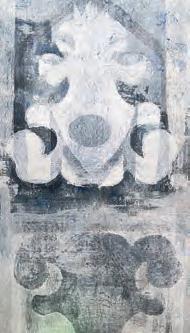
Alsatian flour mills as talismans against disease, and the demonic figures of Matthias Grünewald’s Isenheim Altar, on display in nearby Colmar. Alternately, the flat simplicity of these forms look back to the paper cutouts of childhood, not surprising for an artist who maintained a personal archive as comprehensive as Picasso’s. Perhaps unresolved, these Strasbourg compositions point to tantalizing new directions in Utterback’s lexicon. An iconoclast in his questioning of accepted images and meanings, to the end Utterback always found renewal in the possibilities of painting.
1 See the artist’s exhibition history for a full list of exhibitions hosted by the MFAH that featured Utterback’s work. During the artist’s lifetime, the museum acquired three major paintings, numerous works on paper, as well as a suite of 1991/92 etchings. See also Alison de Lima Greene, Texas: 150 Works from the Museum of Fine Arts, Houston (New York: Harry N. Abrams, Inc., 2000), 26, 140-42, 255.
2 Robin Utterback, quoted by Barbara Rose and Susie Kalil, Fresh Paint: The Houston School (Houston: The Museum of Fine Arts, Houston, 1985), 180.
3 Suzanne Delahanty, Robin Utterback: Paintings 1989-1992 (Houston: Contemporary Arts Museum, 1992), n.p.
4 Linda Cathcart, Four Painters (Houston: Contemporary Arts Museum, 1981), 19.
5 Christopher French, “Collaborating with Robin Utterback,” December 7, 2007. Remembering Robin Utterback (Galveston: Galveston Art Center, 2007) 24.
6 Barry Walker, interview with the author, December 6, 2007.
7 Janet Landay and Donald Barthelme, One + One: Collaborations by artists and Writers (Houston: The Glassell School of Art, The Museum of Fine Arts, Houston, 1988), 11.
8 George T.M. Shackelford, interview with the author, December 6, 2007.
“A friend of mine once said, ‘People think I’m superficial. I’m not superficial. I’m transparent. You can see all the way to the bottom.’ Another friend, very deep, once said in regard to painting, ‘Everything shows.’ A painting is a surface in which I want to see all the way to the bottom—of everything.”
I came to know of Robin Utterback’s work when a dear friend called me and asked if I had any interest in working with the artist’s estate. She suggested that I would take to Utterback’s work, but it was not until I saw Untitled (#19), 1981 and Untitled, 1982 unwrapped and glowing luminously in gallery light that I was struck by how correct her hunch was. Seeing the mottled brushstrokes, lushly layered and covering the entire canvas with subtle modulations of color, I began to think of works by Pat Passlof, but especially works of Milton Resnick, Jackson Pollock, and Claude Monet. The specificity and sensitivity of light reminded me of leaves shimmering in the sunlight.
Utterback’s work is expansive in terms of both material and paths of inquiry, resulting in works that expand beyond simple classification of style or genre and the colorfield-like paintings that initially captured my attention.
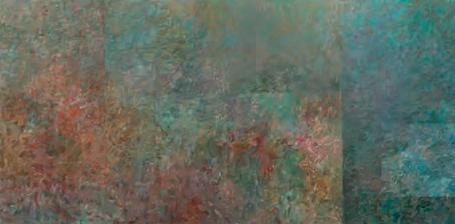
Explorations of materials are exemplified in the variety of media that Utterback used (oil and acrylic paint, ink, newspaper, wood, plastic, ceramics, textiles, and cardboard to name some), and also in his treatment of each medium. Paint can be dense in application as seen in Untitled (#19), 1981, or watery as in Untitled (#789), 1996, or painted onto wood and collaged such as in Untitled (#167), 1986. This broadness of paint application speaks to Utterback’s experimentation with the full capabilities of one medium. He invited the medium to inform the final image as opposed to willing the medium to execute a preconceived idea. Voracious in his attitude towards materials, Utterback also made prints, sculptures, and collaborative quilts.
Without narrative, Utterback’s paintings bare themselves to the viewer. Not because they reveal facts about the artist’s life, or illustrate specific events, but because Utterback allows for the materiality, history, and process of the work to be part of the final image. In paintings like Untitled (#584), 1992, the viewer may fully comprehend sweeping, calligraphic lines that were drawn and redrawn over time. The search for the right feeling, placement and curve are on full display. Process becomes content, as does Untitled, 1982, acrylic on canvas, 49 ½ x 101 ½ in.
B Y S IRENA L A B URN
time. Utterback does not choose one “right” line by negating the others, but instead offers multiplicity as a solution. He was known for using sandpaper to rub down layers of paint, an act that does not erase so much as reveal and unify layers of paint by diminishing the separation of each layer and rubbing one layer into another.
Utterback was known to work on unstretched canvas, a decision that has profound implications on how the painting develops. Imagine a game of soccer where the dimensions of the playing field are found as the game is played, as opposed to clearly delineating the field’s dimensions before the game starts. In the works on paper Untitled (#1070) and Untitled (#1071), both from 1993, the image and its dimensions are found in tandem with one another as the scale of the shapes and the scale of the work expand based on need.
In Untitled (#88), 1989, Utterback worked directly onto an unprimed canvas. Areas of unprimed canvas peek through the organic shapes, a painterly move that suggests
confidence and the desire to show the very bones of the painting itself. A painting is physical, and Utterback shows this – whether the painting itself is literally constructed of “stuff ”, or more traditionally of pigment, canvas, stretcher, and wall.
In the last phase of Utterback’s work, undeniably representational imagery emerged for the first time in many years. Utterback’s introduction of mask-like forms is initially surprising and seems to be at odds with his pre-existing artistic practice. These works, which emerged during Utterback’s residency in Strasbourg, bring together various phases of his oeuvre by incorporating elements such as shape, repetition, shallow space, and materiality.

In the case of Utterback’s cardboard masks, the dominance and clarity of shape recall earlier paintings like Memento, 1976, when one single, bold shape is the driving force of the painting. Unlike Memento, whose composition is entirely bound to a canvas surface, the works on cardboard are freed from the ground, cut-out, and made to exist on their own. In the masks, the holes that function as eyes and mouths allow the viewer to look through and beyond their forms, much like the holes in Untitled (#167), 1986, including the wall that the works hang on as part of their materiality. Playfully, many of these masks are roughly the scale of a human head, alluding to the human figure without depicting human features.
 Untitled (#1070) and (#1071), 1993, ink on handmade paper, 30 ½ x 21 ½ in.
Untitled (#1070) and (#1071), 1993, ink on handmade paper, 30 ½ x 21 ½ in.
Memento, 1976, acrylic, cloth and charcoal on canvas, 56 x 42 in.
Utterback undeniably loved paint and painting, combining the boundless possibilities of material with personal experience. In a world easily seduced by style and branding, Utterback’s work stands apart. His oeuvre is not distinguished by one theme or a predetermined and recognizable style, but by his complete commitment to follow paint wherever it led.
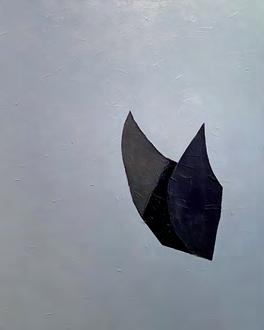


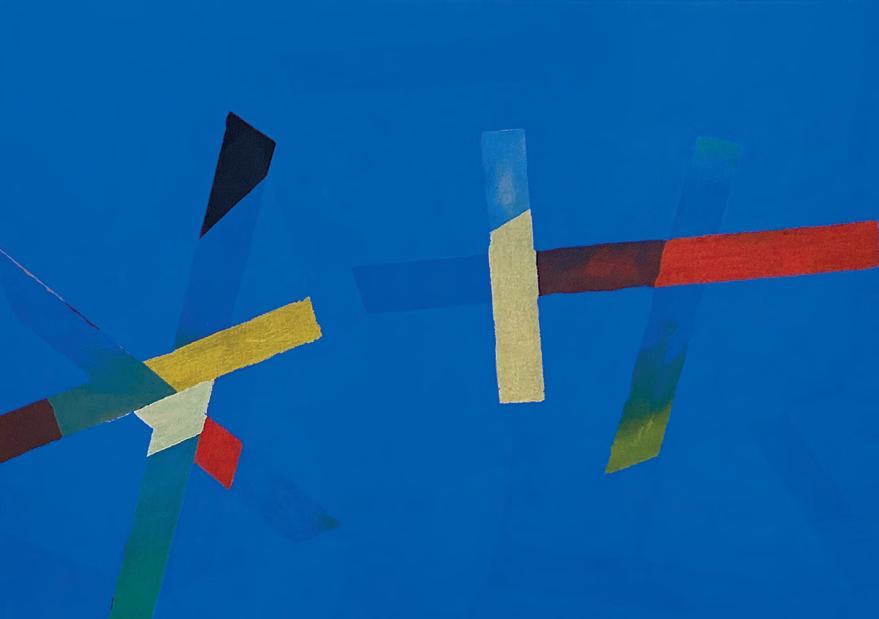
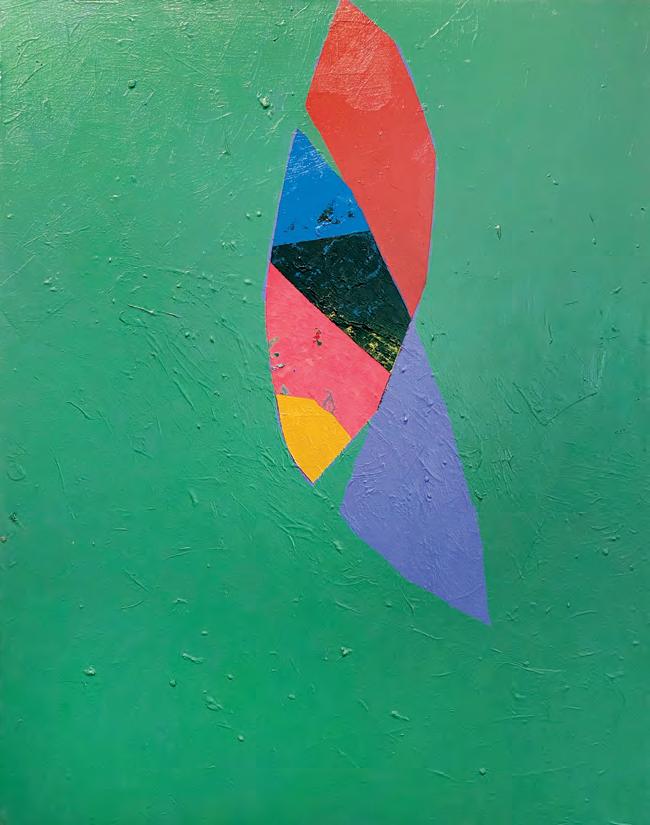
CRYLIC , C LOTH AND C HARCOAL ON C ANVAS

A CRYLIC , C LOTH AND C HARCOAL ON C ANVAS 56 X 42 IN

A CRYLIC , C LOTH AND C HARCOAL ON C ANVAS 42 X 56 IN
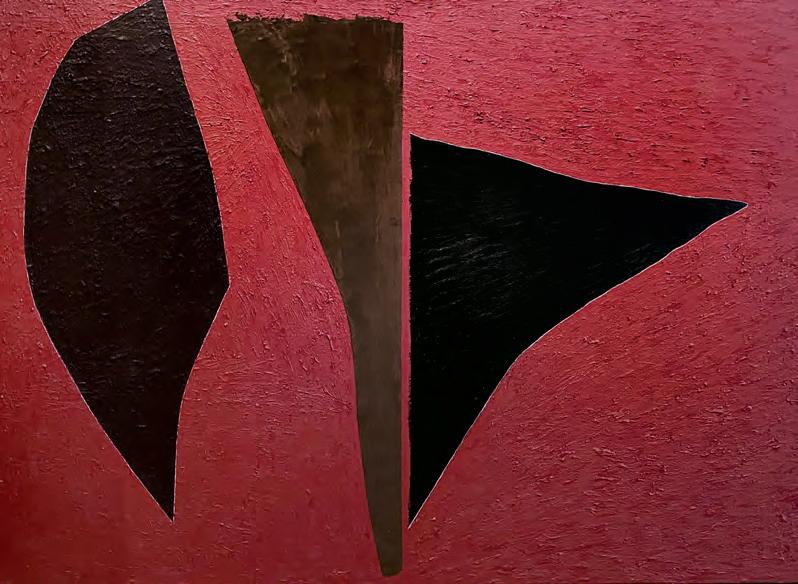
CRYLIC AND C HARCOAL ON C ANVAS
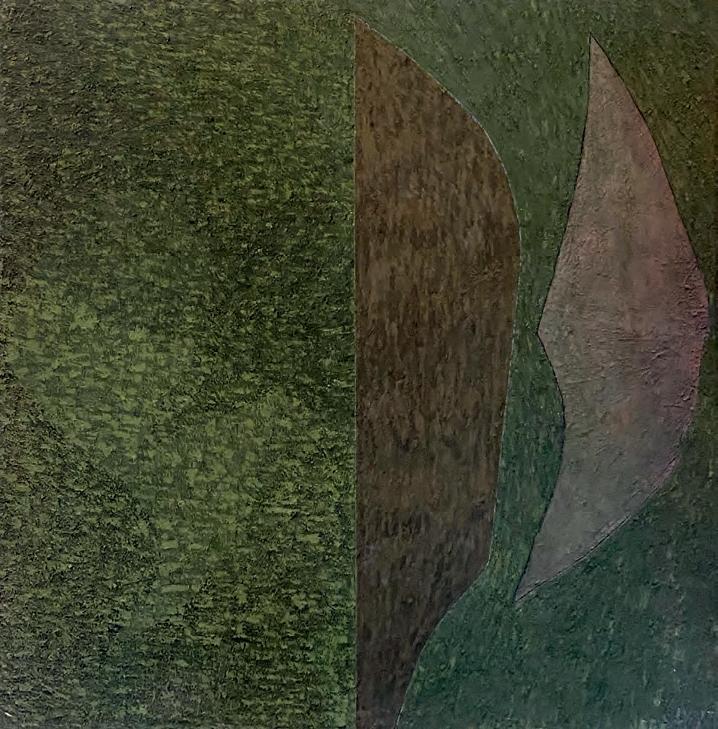
A CRYLIC , C LOTH AND C HARCOAL ON C ANVAS 42 X 42 IN

S LIGHT R ELIEF , 1979 A CRYLIC AND W AX ON C ANVAS 12 X 9 IN
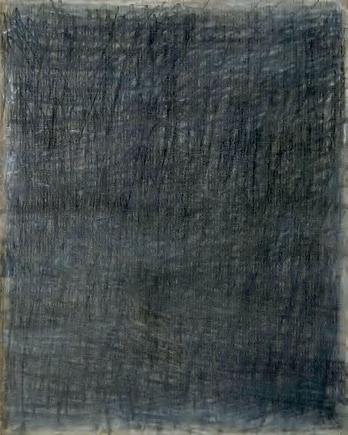









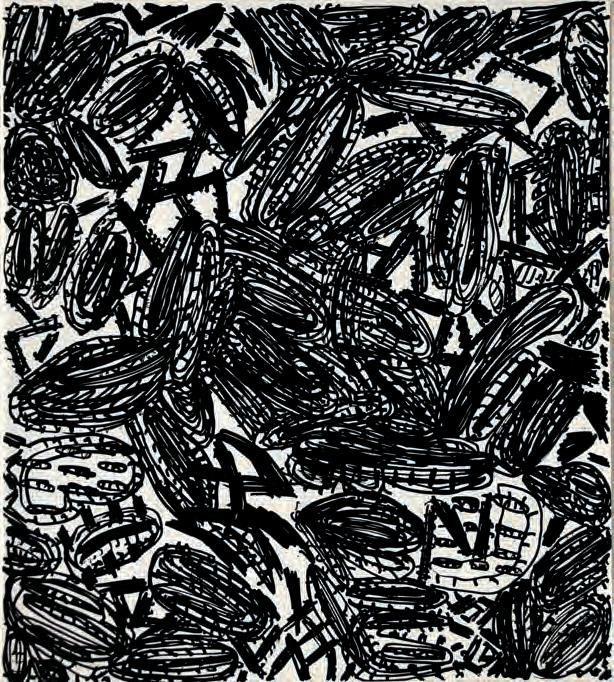

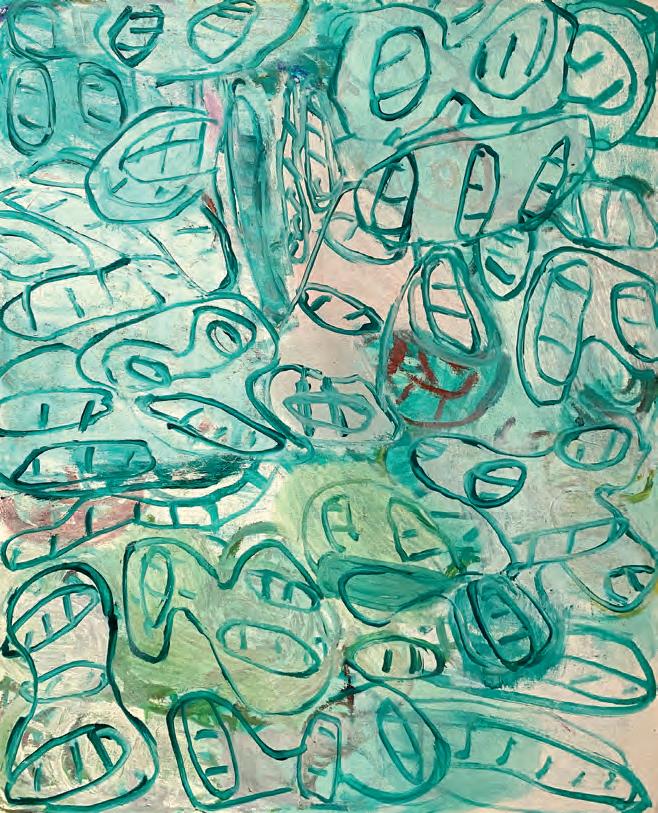


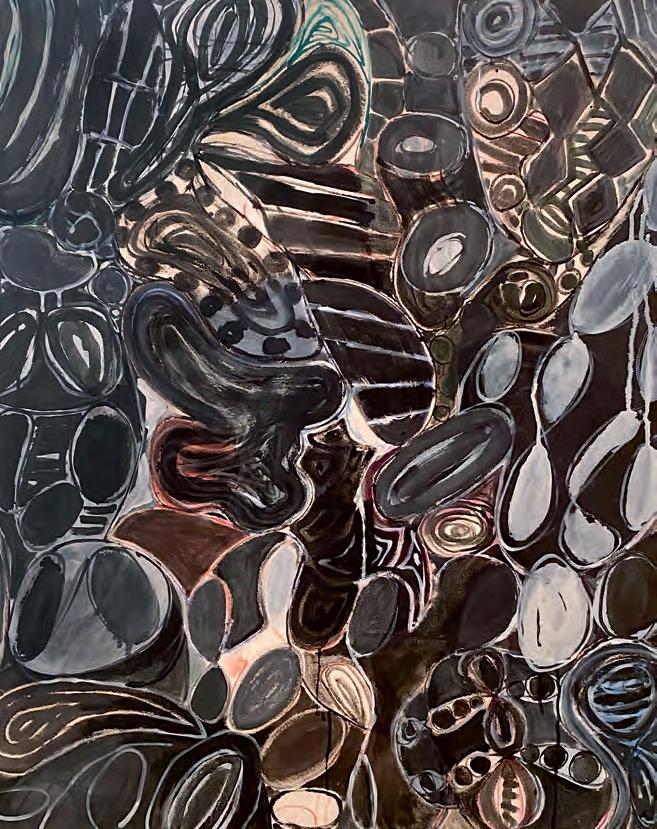

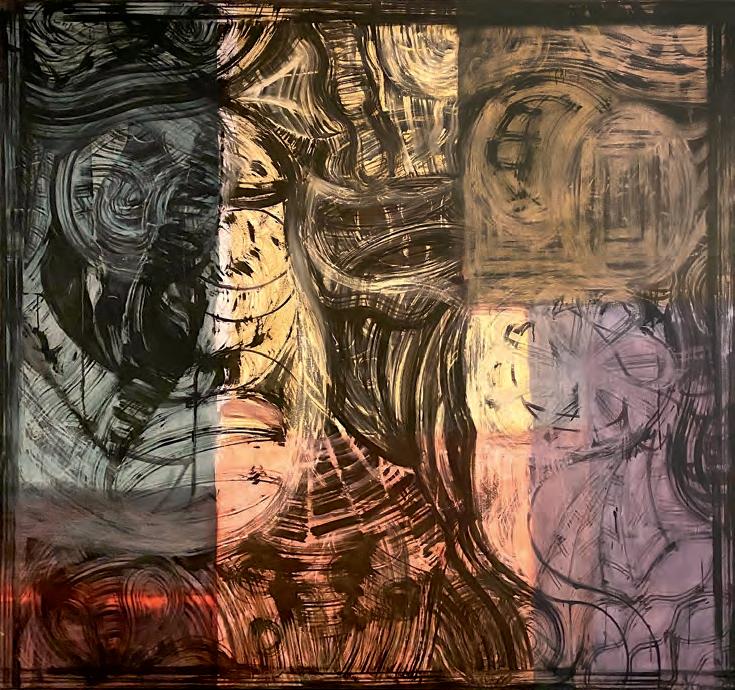
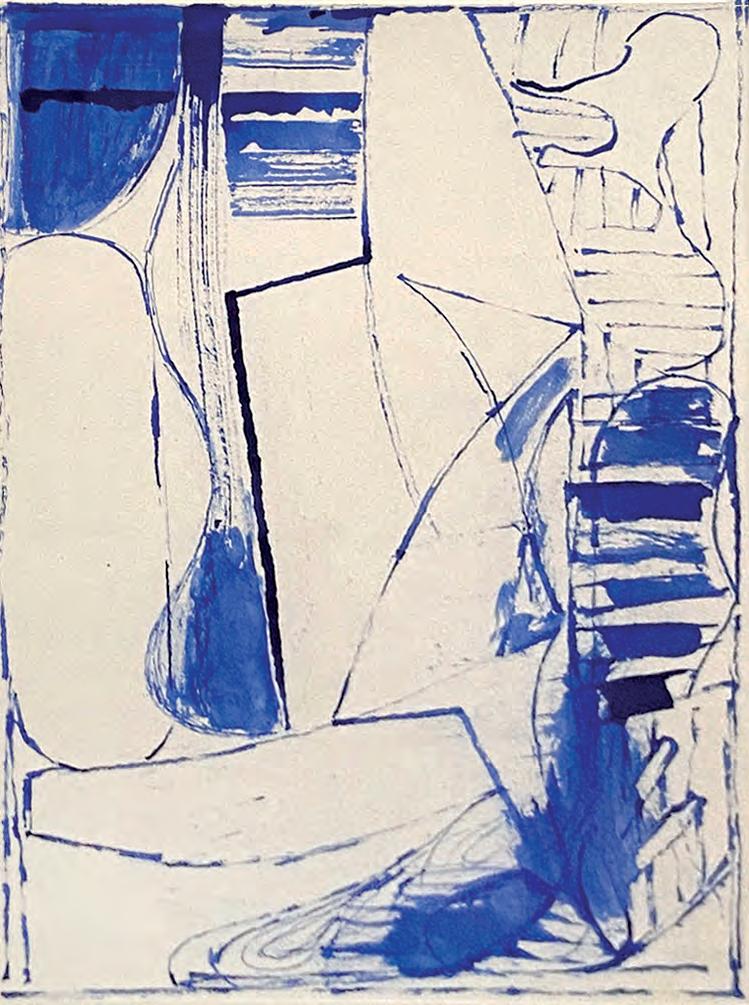
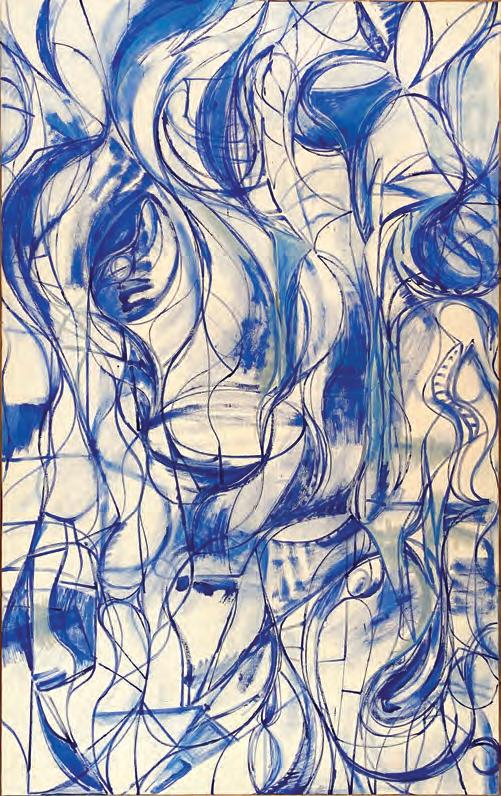


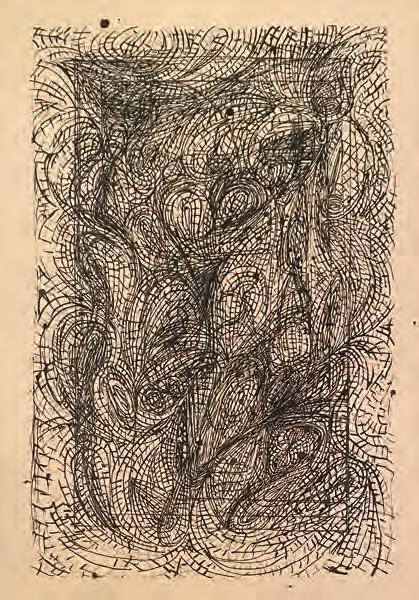
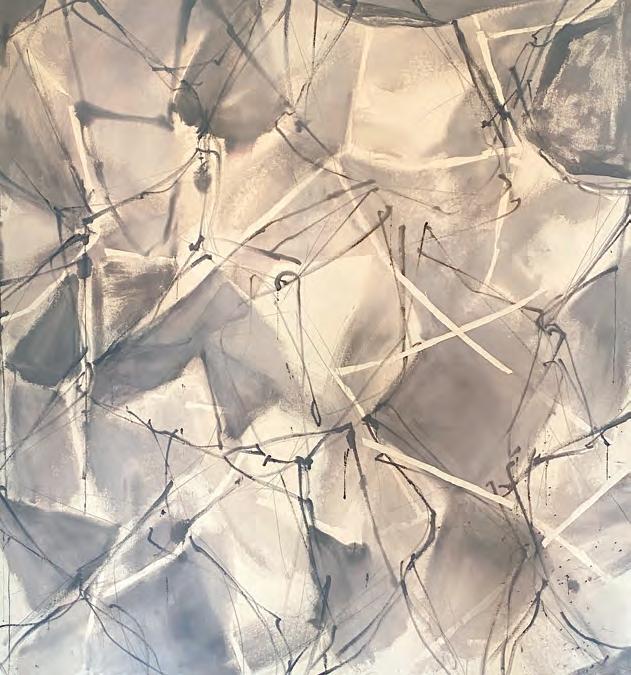


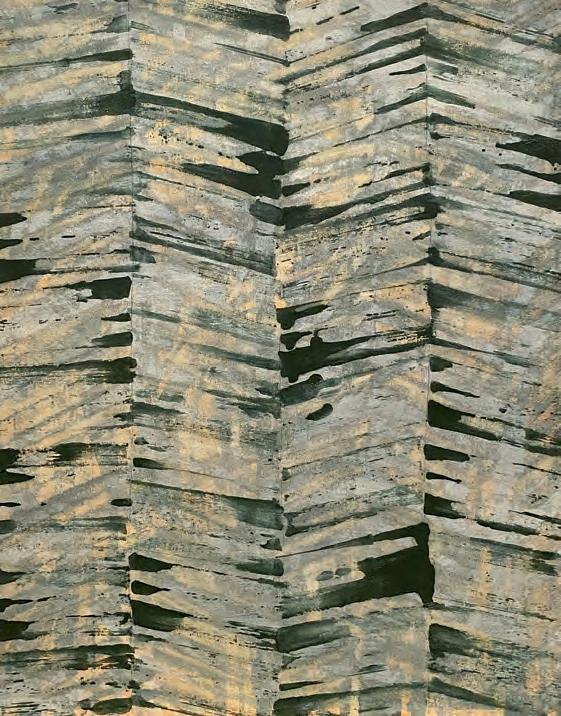


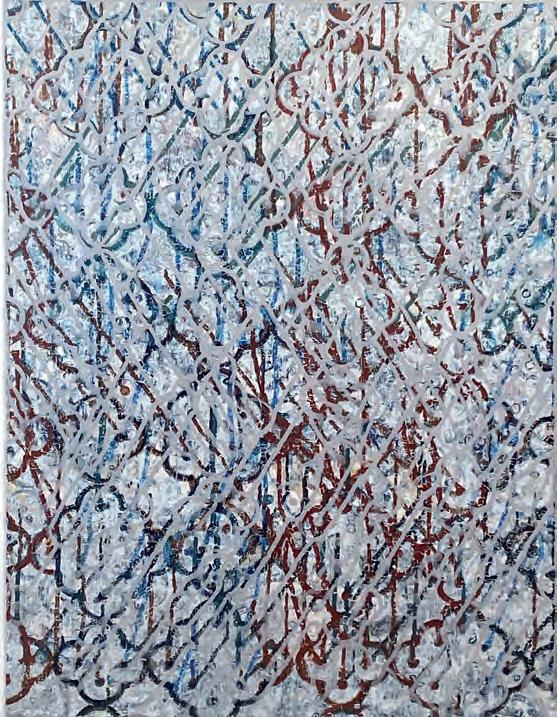
M EDIA ON P APER

U NTITLED , N O D ATE E TCHING ON G REEN F LORAL P APER 9 X 6 ½ IN
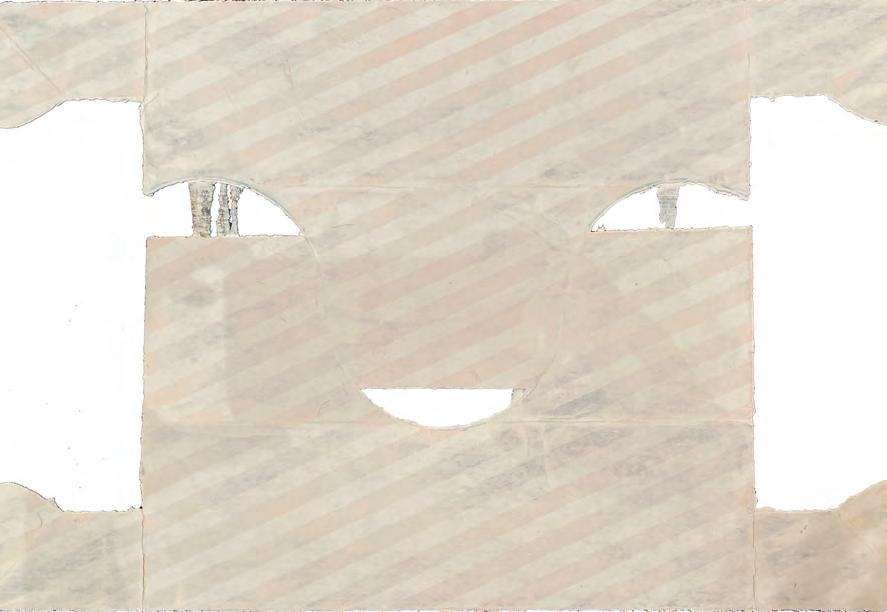
TRIPED M ASK ),
IXED M EDIA ON C ARDBOARD



Born in the small town of Holton, Kansas, Robin Utterback graduated with a B.A. from Rice University in 1971 and returned as the first student in Rice’s Bachelor of Fine Arts program, receiving his B.F.A. in 1974.
Utterback quickly became an essential thread in the fabric of the burgeoning Houston art scene. A year after graduating, Utterback had his first solo exhibition at Tibor de Nagy Gallery in Houston (later Watson/de Nagy & Co.) and would later go on to exhibit in the New York location of the gallery. In 1978, the Museum of Fine Arts, Houston made its first acquisition of Utterback’s work, which marked the beginning of a fruitful relationship between the institution and Utterback. The museum collection holds paintings, numerous works on paper and a suite of etchings by Utterback, and would work with him on various projects.
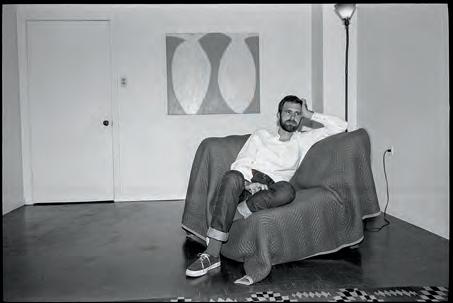
Utterback’s work was included in the seminal 1985 exhibition and publication Fresh Paint, an exhibition of artists deeply connected to Houston that went on to travel to MoMA’s PS1 and the Oklahoma Art Center, in Oklahoma City. Often in dialogue with other artists, poets, writers and art historians, Utterback continued to explore the depths of artistic possibilities in various media. From the early 1990s through the early 2000s, Utterback collaborated with fellow artists to create energetic prints, paintings and textiles. During a 2004 tenure in Strasbourg, Utterback began a new series of works incorporating images of masks in his collages and paintings.
Following Utterback’s death in 2007, Galveston Arts Center curator Clint Willour celebrated Utterback’s life and work with the acclaimed exhibition, Remembering Robin Utterback. The exhibition catalogue featured essays and fond writings by Alison de Lima Greene, William C. Agee, Emily L. Todd, Alexandra L. Irvine and more.
Utterback’s work has been exhibited in galleries nationally and in Europe in both solo and group exhibitions. His work is in collections of the Menil Collection, Houston, the Museum of Fine Arts, Houston, the McNay Art Museum, San Antonio; as well as numerous other public and private collections in New York, Los Angeles, Miami, Chicago and elsewhere. Utterback’s work has been covered in prominent publications such as Art in America, ARTnews, Texas Monthly, Artweek, Houston Chronicle and Houston Press.
Paul Hester, 1977Born in Holton, Kansas 1949 Died in Houston, Texas, 2007
1971 BA, English, Rice University, Houston, TX
1974 BFA, Rice University, Houston, TX
2018 “Robin Utterback,” Meredith Long Gallery, Houston, TX
2016 “Robin Utterback,” Meredith Long Gallery, Houston, TX
2013 “Robin Utterback,” Meredith Long Gallery, Houston, TX
2010 “Robin Utterback: Paintings 1974-2005,” Meredith Long Gallery, Houston, TX
2007 “Remembering Robin Utterback,” Galveston Arts Center, TX
2005 “Robin Utterback,” Barbara Davis Gallery, Houston, TX
2004 “Robin Utterback,” Galerie Espace Suisse, Strasbourg, France
“Robin Utterback,” Salle Conrath, Strasbourg, France
1999 “Robin Utterback: New Paintings,” Donahue/Sosinski Art, New York, NY
1996 “Robin Utterback: New Paintings,” Devin Borden Hiram Butler Gallery, Houston, TX
“Robin Utterback: New Paintings,” E.M. Donahue Gallery, New York, NY
1995 “Robin Utterback: Paintings,” Devin Borden Hiram Butler Gallery, Houston, TX
1993 “Robin Utterback: Recent Paintings,” Tibor de Nagy Gallery, New York, NY
1992 “Robin Utterback: Paintings 1989-1992,” Contemporary Arts Museum, Houston, TX
“Paint Among Other Things,” Galveston Arts Center, TX
“Robin Utterback: Prints and Drawings 1991-1992,” Moody Gallery, Houston, TX, in cooperation with Janie C. Lee Gallery, Houston, TX
1990 “Recent Work: Robin Utterback,” Tibor de
Nagy Gallery, New York, NY
1988 “Recent Work: Robin Utterback,” Tibor de Nagy Gallery, New York, NY
1987 “Robin Utterback,” Tibor de Nagy Gallery, New York, NY
1985 “Robin Utterback,” Watson/de Nagy and Company, Houston, TX
1984 “Collage Painting and Painted Objects: Robin Utterback,” Watson/de Nagy and Company, Houston, TX
1982 “Robin Utterback: Paintings and Drawings,” Watson/de Nagy and Company, Houston, TX
1981 “Robin Utterback,” Delahunty Gallery, Dallas, TX
1979 “Robin Utterback: Recent Work,” Watson/de Nagy and Company, Houston, TX
1978 “Robin Utterback: Recent Paintings,” Watson/de Nagy and Company, Houston, TX
“Robin Utterback,” D. Clayton & Company, Houston, TX
1976 “Recent Paintings: Robin Utterback,” Watson/de Nagy and Company, Houston, TX
1975 “Robin Utterback: Paintings,” Tibor de Nagy Gallery, Houston, TX
“Works on Paper: Robin Utterback,” Watson/de Nagy and Company, Houston, TX
2005 “Opening Bloom,” Barbara Davis Gallery, Houston, TX
“TXmas,” Barbara Davis Gallery, Houston,TX
2004 “Perspectives @ 25: A Quarter Century of New Art in Houston,” Contemporary Arts Museum Houston, TX
1999 “Five Artists, New Work,” DiverseWorks, Houston, TX “Texas Draws,” Contemporary Arts Museum Houston, TX
1996 “Works on Paper,” Devin Borden Hiram Butler Gallery, Houston, TX
“Proof of Love,” Lynn Goode Gallery, Houston, TX
“Texas Modern and Post Modern,” Museum of Fine Arts Houston, TX
1995 “The Sensual World,” E.M. Donahue Gallery, New York, NY
1993 “Texas Contemporary: Acquisitions of the 90’s,” Museum of Fine Arts, Houston, TX
1992 “The Improvisational Spirit,” Transco Tower Gallery, Houston, TX
“Singular and Plural: Recent Accessions of Drawings and Prints 1945-1992,” Museum of Fine Arts Houston, TX
“National Drawing Invitational,” Arkansas Arts Center, Little Rock, AR
1991 “Master Drawings,” Eugene Binder Gallery, Cologne, Germany, in association with Janie C. Lee Gallery, Houston, TX
1990 “Texas Art Celebration ‘90,” Cullen Center, Houston, TX, organized by the Assistance League of Houston
“Some Things I Found in Houston: Selections from the Edward Albee Collection,” Devin Borden Hiram Butler Gallery, Houston, TX
1989 “The Intimate Collage,” The Watson Gallery, Houston, TX
“New American Talent 1989,” Laguna Gloria Art Museum, Austin, TX, organized by the Texas Fine Arts Association
“Texas Art Celebration ‘89,” Cullen Center, Houston, TX, organized by the Assistance League of Houston
“Invitational Exhibition,” The Watson Gallery, Houston, TX
1988 “One + One: Collaborations by Artists and Writers,” The Glassell School of Art, The Museum of Fine Arts, Houston, TX.
January 19-February 21. Catalogue, text by Janet Landay and Donald Barthleme. “Group Exhibition,” Concordia College, White Plains, NY
“Art Against AIDS,” Decorative Center of Houston, TX
“Farrell Brickhouse, Melissa Meyer, Nachume Miller, Robin Utterback,” Tibor de Nagy Gallery, New York, NY
“Drawn from Life: Contemporary
Interpretive Landscape,” Sewall Art Gallery, Rice University, Houston, TX
“The First Triennial 1988,” Contemporary Arts Museum Houston, TX; Texas A&M University, College Station, TX; Art Museum of South Texas, Corpus Christi, TX; Lubbock Fine Arts Center, TX; San Angelo Museum of Fine Arts, TX; Center for Research in Contemporary Art, Arlington, TX; Bridge Center for Contemporary Art, El Paso, TX
“Houston ‘88,” 1600 Smith in Cullen Center, Houston, TX
“Works on Paper,” G.V.G. Gallery, Houston,TX
“Works on Paper,” Tibor de Nagy Gallery, New York, NY
1987 “Texas Art Celebration ‘87,” Two Houston Center, Houston, TX
“Abstract Sensibilities Now,” Lawndale Art and Performance Center, Houston, TX
“From the Object: Still Life Themes and Variations,” The Glassell School of Art, Museum of Fine Arts Houston, TX
1985 “Fresh Paint: The Houston School,” Museum of Fine Arts Houston, TX; The Institute for Art and Urban Resources, (MoMA PS1), Long Island City, Queens, NY; Oklahoma Art Center, Oklahoma City, OK
“Works on Paper: Eleven Houston Artists,” Museum of Fine Arts Houston, TX
1984 “Texas Artists in Houston Corporate Collections,” DiverseWorks, Houston, TX
1983 “New Art from a New City: Houston,” Salzburger Kunstverein, Salzburg, Austria; Galerie an der Stadtmauer, Villach, Austria; Amerika Haus, Berlin, Germany; Museum of Fine Arts Houston, Houston, TX
“Showdown: Perspectives on the South West,” Alternative Museum, New York, NY; DiverseWorks, Houston, TX
1982 “Art From Houston in Norway: 1982,” Stavanger Kunstforening, Norway
1981 “Four Painters: Jones, Smith, Stack, Utterback,” Contemporary Arts Museum, Houston, TX
1980 “Houston Area Exhibition,” Sarah Campbell Blaffer Gallery, University of Houston, TX
1979 “Fire!,” Contemporary Arts Museum Houston, TX
1978 “Third Biennial Invitational Exhibition of Texas Artists,” Beaumont Art Museum, TX
1977 “1977 Houston Area Exhibition,” Sarah Campbell Blaffer Gallery, University of Houston, TX
“Six Painters from Texas,” David Mirvish Gallery, Toronto, Canada
“The Texas Thirty,” The Nave Museum, Victoria, TX
1976 “American Abstract Art,” Messing Gallery, St. Louis, MO
“Second Biennial Invitational Exhibition of Texas Artists,” Beaumont Art Museum, TX “The Philadelphia Houston Exchange,” Institute of Contemporary Art, University of Pennsylvania, Philadelphia, PA;
Contemporary Arts Museum Houston, TX
1975 “Abstract Painting and Sculpture Today,” The Art Center, Waco, TX “1975 Houston Area Exhibition,” Sarah Campbell Blaffer Gallery, University of Houston, TX
1974 “Recent Works by Suzanne Manns and Robin Utterback,” Sarah Campbell Blaffer Gallery, University of Houston, TX
“Made in Texas: Six Artists Working in Texas,” Tibor de Nagy Gallery, Houston, TX
“First Biennial Invitational Exhibition of Texas Artists,” Beaumont Art Museum, TX “1974 Houston Area Exhibition,” Sarah Campbell Blaffer Gallery, University of Houston, TX
McNay Museum, San Antonio, TX Menil Collection, Houston, TX Museum of Fine Arts Houston, TX Museum of Texas Tech University, Lubbock, TX
Gray, Lisa. “Clues suggest what artist was thinking.” Houston Chronicle, December 30, 2007, Zest 9.
Schulze, Troy. “Remembering Robin.” Houston Press, December 13-19, 2007, p. 32. “Arts center exhibit honors ‘painter’s painter’ Utterback.” The Daily News [Galveston County, Texas], December 2007, pp. 42-43.
“Remembering Robin Utterback.” The Parrot [Galveston], November 2007, p. 17 Greene, Alison de Lima, et. al. Texas: 150 Works from the Museum of Fine Arts, Houston. (New York: Harry N. Abrams, Inc., 2000). Mitchell, Charles Dee. “Robin Utterback at Donahue/Sosinski.” Art in America, November 1996, p. 117. Johnson, Patricia C. “Utterback Show Elegant, even Poetic.” Houston Chronicle. March 16, 1995, p. 10 D.
______________. “Discover a Positive Solution.” Houston Chronicle, October 30, 1992, E 1,4. McBride, Elizabeth. “Robin Utterback in Houston and Galveston.” Museum and Arts Magazine: Houston’s Art Journal, January 1993. Colpitt, Frances. “On the Scene: Houston.” Artspace, March/April 1993.
Hopwood-Lewis, Steven. “Robin Utterback.” New Art Examiner, March 1993. p.39. Chadwick, Susan. “Artist Plays with Texture, Space in Intriguing Show.” The Houston Post, February 27, 1995, p. D 8. ______________. “Artists Explore New Worlds.” The Houston Post, October 8, 1992. ______________. “Houston Artist Frees Himself in CAM Exhibit.” The Houston Post, October 28, 1992, pp. D 1,3.
“Local Artist Solos in CAM Exhibit.” The Houston Post, October 18, 1992. Utterback, Robin. Artist Book for Bayou Book Series #8: Backwards, Contemporary Arts Museum, Houston, 1992. Kalil, Susie. “Abstraction Ages: Robin Utterback’s paintings show an art form past youthful
radicalism and into elderly caution.” Houston Press, November 12, 1992.
_________. “Houston Artists.” ARTnews, December 1981, p. 106.
_________. “Robin Utterback: Spacial Complexities.” Artweek, September 22, 1979, p. 3. Levi, Jan Heller. “Robin Utterback, Tibor de Nagy.” ARTnews, September 1990. Pp. 165, 167. Welish, Marjorie. “Robin Utterback: Tibor de Nagy.” Artscribe International, Summer 1987. Pp. 81-82. Ashbery, John. “Robin Utterback at Tibor de Nagy.” Art in America, June 1987, p. 152.
Kalil, Susie and Rose, Barbara. Fresh Paint: The Houston School. 1985. Museum of Fine Arts, Houston. (Houston, TX) pp. 180-181. Glueck, Grace. “Art: A ‘Houston School’ Emerges.” The New York Times, May 24, 1985, p. 20. Schjeldahl, Peter. “Art and Money in the City of the Future-Think: Some Artists.” Houston City Magazine, February 1980, pp. 50-53. Ennis, Michael. “The Texas Heat.” Texas Monthly, April 1979, pp.170, 173.
Lee, Edwy B. “1977 Houston Area Exhibition.” Art Voices/South, January/February 1978, p. 29. Crossley, Mimi. “Review: Utterback, Hughto at Watson/deNagy.” The Houston Post, January 2, 1977.
__________. “Review: Paintings by Robin Utterback.” The Houston Post, September 21, 1979, p. 14 E. “Winning Entry.” Houston Chronicle, April 14, 1987.
2143 Westheimer Road Houston, TX 77098 www.foltzgallery.com
